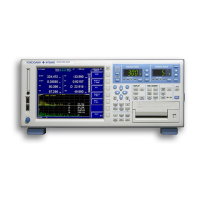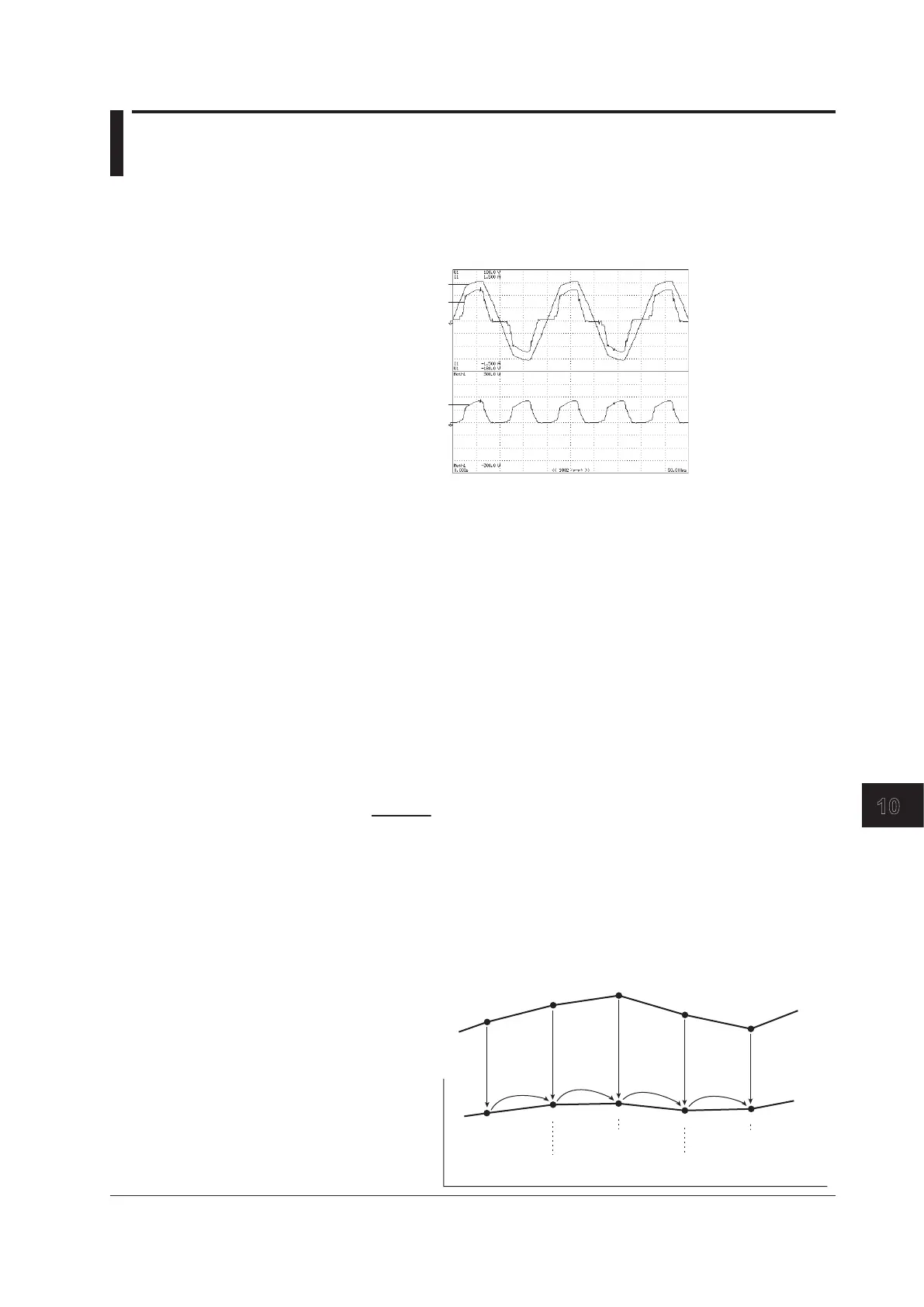10-1
IM WT3001E-51EN
Waveform Computation (Option)
10
10.1 Waveform Computation Function
Waveforms obtained by adding/subtracting displayed waveforms or squared or averaged
waveforms can be displayed. For example, this allows the waveform of instantaneous
power to be displayed by multiplying the voltage waveform by the current waveform. In
addition, a cursor can be placed on the waveform to display various data at that point.
Waveform of active
power P1 (= U1 × I1)
Waveform of current I1
• Equation
Two equations (Math1 and Math2) can be created by using operands U1 to I4,
TORQUE, and SPEED that correspond to the input signals of each input element
andmotorinput.Inaddition,operandsP1(whichisequaltoU1×I1)andPm(which
isequaltoTORQUE×SPEED)canbeused.Therecanbeupto16operandsinan
equation.
The following operators are available: +, –,
*
, /, ABS (absolute value), SQR (square),
SQRT (square root), LOG (natural logarithm), LOG10 (common logarithm), EXP
(exponent), NEG (negation), and AVG2 to AVG64 (exponential average).
The computed results are displayed as computed waveforms (Math1 and Math2).
• AVG
The rms voltage or current or the instantaneous value (sampled data) of the active
power can be exponentially averaged using a specified attenuation constant, and
the waveform can be displayed. Averaging is performed according to the following
equation.
n =
n
n–1
xn–1+
xn: n
th
display data (The first display data x1 is d1.)
xn–1: n-1
th
display data that has been exponentially averaged
dn: n
th
sampled data
k: Attenuation constant (select from 2, 4, 8, 16, 32, and 64)
Example of How to Write the AVG Function
AVG64(P1): Displays the AVG waveform of the active power of element 1.
d1
x1
(=d1)
d2
d4
d5
x2
x3
x4
x5
Exponential average
of x1 and d2
Exponential average
of x2 and d3
Exponential average
of x3 and d4
Exponential average
of x4 and d5
AVG waveform
Chapter 10 Waveform Computation (Option)

